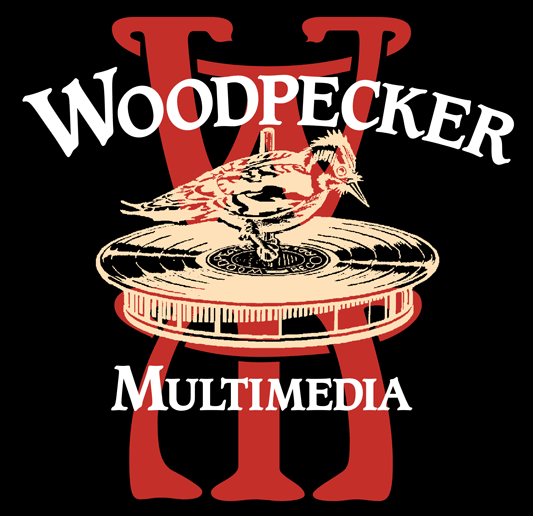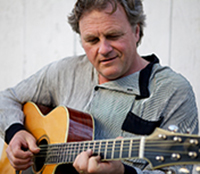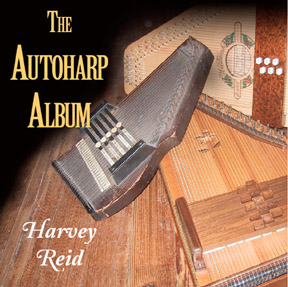 H
H

|
LINER NOTES AND CREDITS TO HARVEY REID's "The Autoharp Album" ALBUM1 Waltz of the Waves (Reid)(3:14) CREDITS The autoharp or “chorded zither” is the only surviving member of a surprising number of mechanical zithers created in the late 1800’s. It is the only folk instrument of American origin, and a rare instance of an invented instrument falling into the folk tradition. It was patented in 1882 by Charles Zimmermann, who manufactured the first instruments in Philadelphia. Commonly played on a table or in the lap, it was used as a chordal accompaniment to songs. The notched felt chord bars dampen certain strings in the manner of the muting techniques of zither players. It sold widely as a novelty in the 1890’s, and a large number were sold in the Sears catalog. As many as 500 autoharps were made in a day at the peak of its popularity in 1895. When the first recordings were made in the Southern mountains in the 1920’s, a number of musicians turned up (notably Ernest “Pop” Stoneman) playing melodies and old-time music, often holding the instrument upright in what is now called the Appalachian style. The immense popularity of the Carter Family in the late 1920’s and 1930’s brought the instrument to a wide audience and established its primary role for the accompaniment of folk songs, though it was not commonplace and was never really heard as a melody instrument. The Oscar Schmidt company was the only manufacturer for decades, and for many years it was made almost exclusively for use in school music classes. The autoharp was featured on some Folkways recordings in the 1960’s, and played by a number of popular folk performers such as Mike Seeger, Ian & Sylvia and John Sebastian. A number of musicians began playing the instrument more seriously, and Bryan Bowers emerged as probably the most influential and notable player ever. Bowers has greatly popularized the diatonic autoharp tunings, which play in only a few keys, and feature pairs of unison strings. The result is a rich, shimmering sound, similar to the way a 12-string guitar differs from a 6-string. In recent years, the number of autoharp builders and players has grown steadily, as has the instrument’s repertoire and visibility. Harvey started playing autoharp in the summer of 1972, at the age of 18. A full-time musician his whole life, he is known primarily as an acoustic guitarist, composer and songwriter, and was the 1981 National Fingerpicking Guitar Champion. He also plays the mandolin and 6-string banjo, and has always featured the autoharp prominently on his recordings and in his concerts. Reid’s unique style, impeccable tone and uncannily accurate melody-playing technique are rooted in his deep knowledge of traditional music, and in the intricate right-hand picking skills borrowed from his guitar background. He was the winner of the International Autoharp Competition in 1982, and his CD Steel Drivin’ Man was voted in the Top 10 Folk CD’s of all time by Acoustic Guitar Magazine. This is his 17th recording. About The Songs... 2- On the Sea of Galilee (Trad.) What would an autoharp album be without a Carter Family song? This has nice words, but is a natural as an instrumental piece, though I never heard anyone do it on autoharp. You can play both parts of the echo chorus where they sing on the sea (the sea, the sea) of Galilee (of Galilee). Recorded on Bryan Bowers’ lovely cherry-top G ‘harp. It goes a lot higher than other ‘harps I have played, and I got a very satisfying “music box” sound. (^)(OB) [3/13/03] 3- Ung Åslaug (Trad.) A Norwegian folk song, learned from the incredible singing of Rita Eriksen. She told me it is a very sad song (it’s in Norwegian and I can’t understand the words) and one I think she said they call “The Crying Song”. I think she also said it is about a young girl named Åslaug whose lover who is off at war. (^)(S) [2/21/03] 4- Lowlands of Holland (Trad.) Learned from Irish singer Dolores Keane, for a concert I did with her and Rita. I first worked it up it on guitar, then did it for a while on the bouzouki and mandocello. Only later did I realize I could not get the flow right unless it was on the autoharp. One source I read said that this is an English song which appears in print in 1760 as The Sorrowful Lover’s Regrate, while others say it is a Scottish folk song. It can be found in several early Scottish collections. (^)(S) [2/26/03] 5- The Autoharp Polka (H. Reid) Written to take advantage of the way diatonic melody playing works, with open strings. Its sound reminds me of a hammered dulcimer. This was hard work to write and record, and after I realized I wanted to call it the Autoharp Polka, I wasn’t sure if I wanted to finish it if someone had already written a tune with that name. I checked to see if the words autoharp polka appeared together anywhere on the internet, and Google searched 3,083,324,652 web pages and returned zero(!) hits for that phrase. So I pressed on. (OG)(^) [3/16/03] 6- Southwind/Simple Gifts (Trad.) Two of my all-time favorite traditional melodies, and ones that I think really work well with the combination of autoharp and violin, which I am very fond of. I have recorded them both before, but I perform them a lot with Joyce Andersen, and thought it would make sense to include them just the way we do them on stage. (S)(^) [3/1/03] 7- The Coming of Winter (H. Reid/ B. Silber) Written and recorded on Sept. 23, 1986 at my family’s cottage on the coast of Maine. There were two takes, and they are both almost identical. We only performed it once, that very week. It is quite a lot of sound for just two little instruments, and is very evocative and well-played, so I made no attempt to re-record it. It was remixed and remastered for this CD. It is played in D, with an F-major lock bar, which makes it modal. (#)(B)(S) [9/23/86] 8- The Flowers of Saskatchewan (D. Francey) A gem from my Canadian friend David Francey, and one that I also tried to play on some other instruments before realizing that it was best suited for the autoharp. I normally would not tackle a subject this big, but I am grateful David did. I first performed it on Veteran’s Day. (^)(S) [2/23/03] 9- John Henry (Trad.) Borrowed from the repertoire of Kilby Snow, the only player I ever heard get a bluesy sound, and whose autoharp work was unique. I met Kilby in Virginia when I was 19, and he showed me his homemade spring copper fingerpicks. He played left-handed, so it is impossible to duplicate the sound of his “drag notes,” as they are usually called. I do them with my thumb, and even spent a day trying to play my ‘harp upside-down to see if I could get that sound with my fingers like he did. (I gave up.) I swiped Bryan Bowers’ Orthey chromatic ‘harp while he was in the shower, and recorded this quickly in the morning before he could get out of town. Thanks, big guy. (OC)(^) [3/14/03] 10- Not Grieve the Dying Light (H. Reid) A hymn (it has words), and a prayer for Spring, written on a snowy day during a long winter, on Skip Carter’s Orthey harp (OG), and recorded the next day when Bryan Bowers visited with his pile o’ ‘harps. (He even helped me tune it...) It is well-suited to the type of flowing melody and passing chords that the autoharp is so good at. I play it with lock-bars on my chromatic, but was able to dodge the flat-7 strings on Bryan’s harp. (^)(OB) [3/13/03] 11- Civil War Medley (Trad.) [Battle Cry of Freedom/Dixie] I used to play this 20 years ago, and forgot about it until I found it last year on an old concert tape. One from the North and one from the South, which is right for me since I live on the north side of the Mason-Dixon line, and grew up on the south side. These kinds of anthems, and music from the 1800’s seem to work well on the instrument. You really need the I-7 and II-7 chords, which the diatonic ‘harps generally don’t have. (S)(^) [3/1/03] 12- Peach Picking Time (J. Rodgers) I never heard anybody do a Jimmie Rodgers song on the autoharp, and could not resist including this one, since I think the instrument is suited for the mood of his music. I especially like the yodel part. You need a lot of chords on a chromatic harp for this one, and it’s a workout to fit them in. (S)(^) [3/3/03] 13- Lament For a Cabin Boy (H. Reid) (OA) For a 15 year-old boy named George Lewis who went down in a local shipwreck in 1842. It’s done here in Em on an A-E, 2-key diatonic, and there are some open string moves. To do it on my chromatic I play it in Dm with a C-major lockbar, though the D major chord lacks the 3rd, which is tolerable. (OA)(^) [3/10/03] 14- Down Yonder Medley (Trad.) Recorded at a concert in 1985 at Holstein’s, a folk club in Chicago, back when I was living in my van. These kinds of old-time tunes are the highest-energy music I can muster on this shy instrument. The three tunes are Down Yonder, The Old Spinning Wheel, and Redwing. On Spinning Wheel I use one of the chord bars to hit a harmonic, since it happened to land exactly at the center of the string. Sort of a circus trick, but it’s sort of circus music. (@)(S) [3/5/85] 15- The Flower of Loudoun County (H. Reid) I wrote this in 1979, and recorded it in 1983 for my 2nd LP, with some friends on backup vocals, bass, steel guitar and viola. I decided to re-record it to feature the autoharp more. I used to live in Virginia, and the hills of the horse country there are filled with history. (^)(S) [2/22/03] 16- The Harp that Once Through Tara’s Halls (Trad.) A stately old Irish standard that used to be in all the piano song books, and one I got from the legendary Irish tenor John McCormack. The words were written by Thomas Moore in the 1700’s, though I have an old book that says that he used to travel with a minstrel named Stevenson who taught him folk songs, so I suspect Moore did not write the tune. Tara was the mysterious hilltop castle that was home to Irish kings. (^)(S) [2/20/03] 17- Frankie & Johnny (Trad.) In honor of Kilby Snow I included one more bluesy song, with some piano (which I can’t play) flavor thrown in. I don’t think Kilby’s harp had enough chords to do this kind of thing, but his zingy, twangy tone is still the model we have for this sound. You need an Eb chord in D to do this. (S)(^) [3/25/03] 18- Bourée in G (H. Reid) I take some liberties in tempo on this dance rhythm, and start rather rubato. A study for diatonic melody playing, using common chords, done with some open chords, and no lock bar. The autoharp needs more of its own music, and I offer this one. (OG)(^) [3/10/03] 19- Maplewood March (H. Reid) I was living on Maplewood Avenue when I wrote this, and my autoharp is made of maple, so hence the title. It is an attempt to write a dance tune with a driving, old-time fiddling feel that is suited for the way an autoharp plays melody. This is the only autoharp piece on my 1993 CD Circles, so I snitched it and included it on here so it would not be so lonesome. It was recorded live into a DAT machine in a hotel room, with David Surette on guitar. (D)(%)(S) [3/1/92] 20- Gathering the Harvest (H. Reid) Written in 1986 as a Thanksgiving song; it’s almost a hymn. It was on an early recording of mine from that year called The Coming of Winter. I decided to re-record it, since I thought I could do it better and get a richer autoharp sound. I only sing this one a few times a year around the holiday, and always wish I did it more. (^)(S) [2/21/03] 21- Let Your Light Shine on Me (Trad.) Played on Andy Cohen’s 23-string, 5-chord Zimmermann “Miniature” autoharp, (on the cover) one of the first ever made. It dates from about 1885, and some strings seemed to be original. The little guy was barely playable, though had obviously been played a lot. (Its felts were very worn.) It has an amazingly rich sound for such a small, old instrument, and a funky, sweet tone. It sounds best when played on a table. The song is an old hymn from Willie Johnson that Andy started singing when we got it in tune the first time and were jamming with his dulceola. (Z)(^) [3/15/03] ©2017 |

